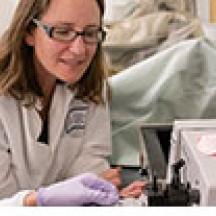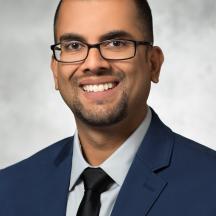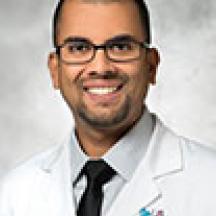News
11/30/2018
A research team led by Jared Churko, PhD, director of the University of Arizona iPSC Core in the UA Sarver Heart Center, used a transcriptomic approach — studying what genes are expressed — to identify gene signatures of cell subpopulations identified as atrial-like or ventricular-like. This understanding could lead to regenerative therapy discoveries for the millions of people living with damaged heart muscle caused by heart attacks or other chronic heart conditions.
11/27/2018
Individuals with a particular genetic factor may be more resistant to plaque build-up and have a reduced risk for coronary artery disease.
11/01/2018
NIH grant will allow Taben Hale, PhD, to study cardiac fibroblasts.
10/24/2018
A lab simulation model of an artificial artery in the Slepian Lab at the University of Arizona Sarver Heart Center demonstrates “pulse wave velocity” is a feasible measurement for monitoring blood pressure. Wearable patches show promise for measuring PWV, making them a potentially inexpensive blood-pressure monitoring option.
10/11/2018
The University of Arizona Structural Heart Disease Program team at Banner – University Medical Center Tucson, led by Kapil Lotun, MD, reached another milestone last week in completing the first-ever transcatheter aortic valve replacement (TAVR) procedure on a patient with a bicuspid aortic valve utilizing only transesophageal echocardiography (TEE) to guide them. The procedure also was unique in that only a minimum of contrast dye was employed in final diagnoses preparations for the procedure and no CT (computed tomography) scan was used at all.
10/11/2018
If you had a “silent” heart attack and didn’t know it, does it matter? Tushar Acharya, MD, assistant professor of medicine, and colleagues of the National Heart, Lung, Blood Institute of the National Institutes of Health, called unrecognized myocardial infarctions (MI) “an underappreciated public health problem.” The research team found that the combined risk of death, a subsequent nonfatal heart attack, and heart failure were similar at a 10-year follow up for both recognized and unrecognized MI. The unrecognized MIs were identified using cardiac magnetic resonance (CMR).
10/08/2018
The new faculty cardiologists bring expertise in cardiac imaging, cardio-oncology and interventional cardiology.
10/01/2018
An Advanced Electrophysiology Cardiac Catheterization Lab opened at the beginning of September. Banner – University Medical Center Tucson is the first hospital in Arizona with this state-of-the-art technology
10/01/2018
Sarver Heart Center welcomed three cardiologists to its faculty: Tushar Acharya, MD, Olivia Hung, MD, PhD, and Nader Makki, MD. They bring expertise in cardiac imaging, cardio-oncology and interventional cardiology.
08/31/2018
Dr. Khadijah Breathett, MD, MS, FACC a Black female advanced heart failure/transplant cardiologist can’t remember how many times her Black friends have lamented to her about the body mass index (BMI). “I show my patients and community members maps of obesity over the decades, and we have been getting wider. Just look at photos of your great and great-great grandparents and their more slender physiques: we have been getting wider overtime.”











